England Beaches, Countryside, Food & Wine, Trains
Norfolk’s north coast: Where wildlife, heritage and coastal flavours meet
Published
19 June 2025

Norfolk Coast | Kelling Heath Cycling
England’s quiet coastal gem, the Norfolk coast is home to seals, steam trains, royal estates and some of the best local produce in the UK
The grey seal, jet black under the gloss of water and the late afternoon, bobbed about the North Sea. His enormous head with its long, above-the-eye whiskers watched our boat. His rotund companion, all 200kg of him hauled out on the sand spit of Blakeney Point, idly watched us as we tried to catch glimpses of these marine creatures who live in the cold waters off eastern England’s coast.
We’d set out with seal-spotting outfit Beans from Morston Quay in the county of Norfolk. The quay is set on an estuary where coiling creeks of the River Glaven meander towards the sea. A golden light promised a glorious late spring afternoon. Through Morston Creek we passed boats at anchor and watched little terns on the breeze diving like fast arrows for fish. Inland, the green-grey saltmarsh gave way to a greener horizon dotted with the tallest things on this flattest of landscapes – ancient church towers and the white sails of the Cley Windmill, three miles to the east.

“The seals feed on the tide and go where the fish go,” said our skipper as the boat gently rose and fell on the water.
“They take about 10lbs a day”. There was a joke and a ripple of laughter, too, about a ‘Sealfie’ as we cruised to the tip of Blakeney Point, a hook-shaped shingle peninsula some four miles long whose shape has ebbed and flowed with the tide, erosion and longshore drift.
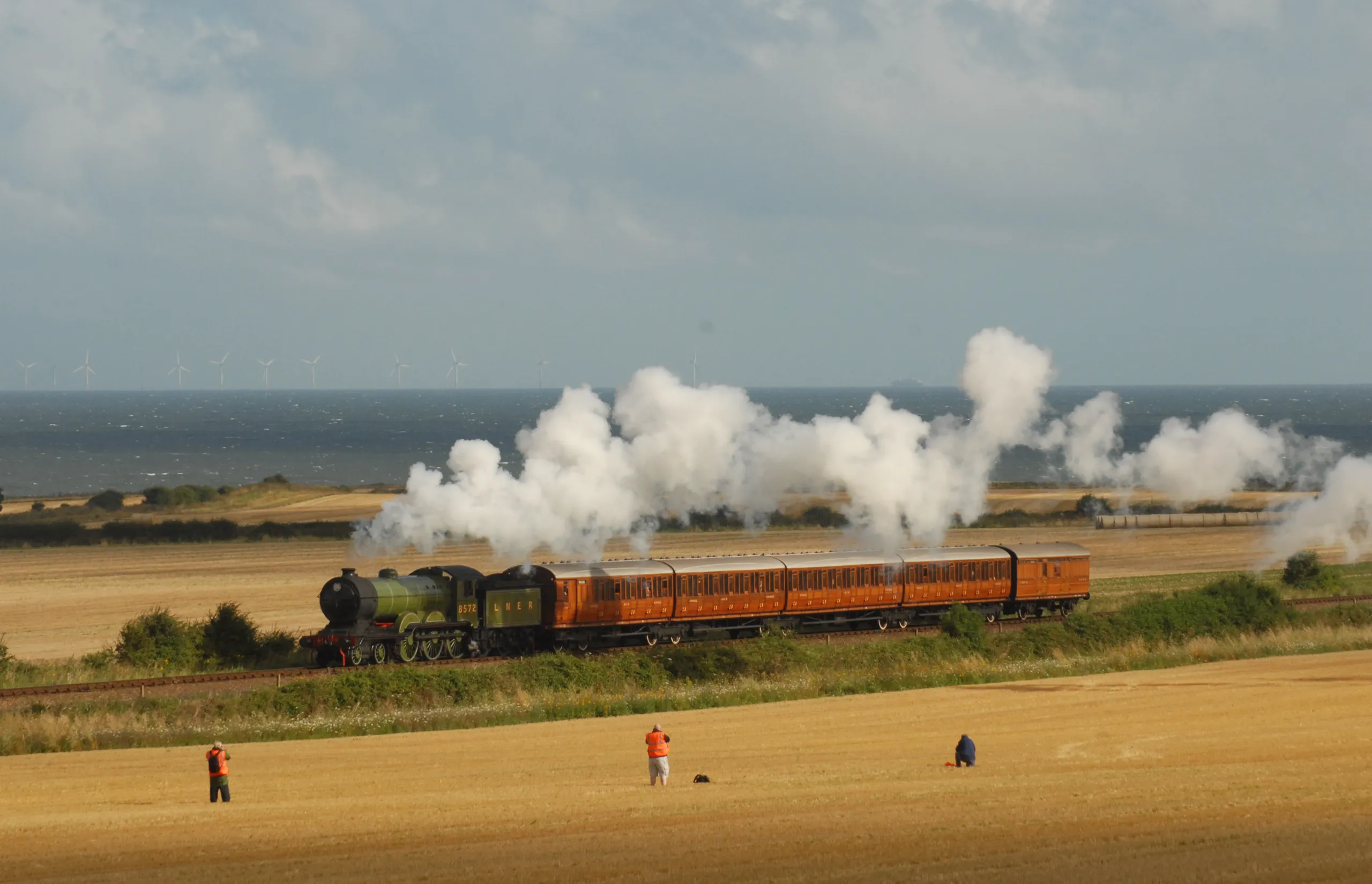
A region named one of 2025’s best
We were exploring Norfolk after guidebook publisher Lonely Planet named East Anglia as one of the best places in the world to visit in 2025. Under wide skies are flat landscapes dotted with windmills, salt marsh and creeks that trace the bulge of eastern England. The region is also home to waders, harriers, otters and common seals. It’s catnip for walkers and foodies, too: tucked into farm and field and coastal villages are gorgeous places to stay with fine restaurants serving up the region’s produce of fresh fish, crab, samphire, cheese, wine and beer.
Inland, pretty, timber-framed homes are found in villages reached by hedgerowed lanes; dozens of large medieval churches tower above arable fields – some with painted ceilings or carved-angel roofs. They were built on the back of the wealth of the wool trade that sustained this region at its height between 1450 and 1530. The mostly silent sails of mills across Norfolk are drainage mills, the legacy of a time when the marshes were drained to grow crops and keep cattle in the 19th century.
Luxury car hire outfit The Out has partnered with Norfolk’s Harper Hotel and will deliver a Jaguar Land Rover to Heathrow for you or to alternative London addresses. Norfolk’s north coast is 140 miles (about 225 kilometres) away. The region is reachable by train and buses stop all along the coast. But to explore fully you’ll need your own wheels.
At the heart of King’s Lynn we are wide-eyed as we stand admiring handsome buildings dating from the 12th to the 18th century, all reflecting the town’s importance as one of the foremost medieval ports in the UK that traded in wool, corn and salt with the Hanseatic League of countries – a loose alliance of city states who acted together to deter piracy. (For the lowdown, join a King’s Lynn walking tour).
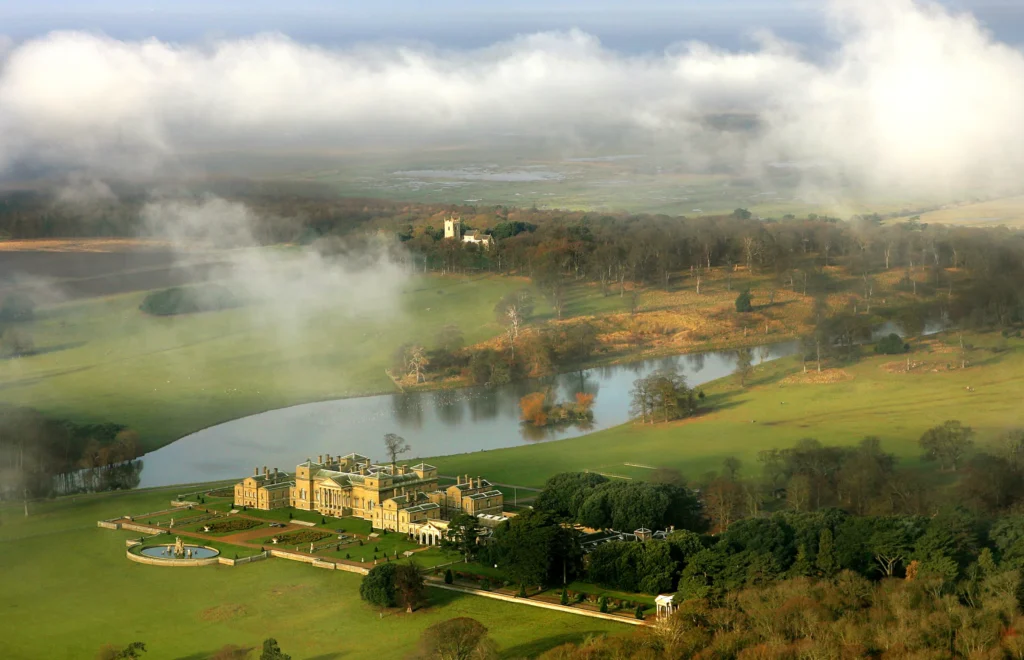
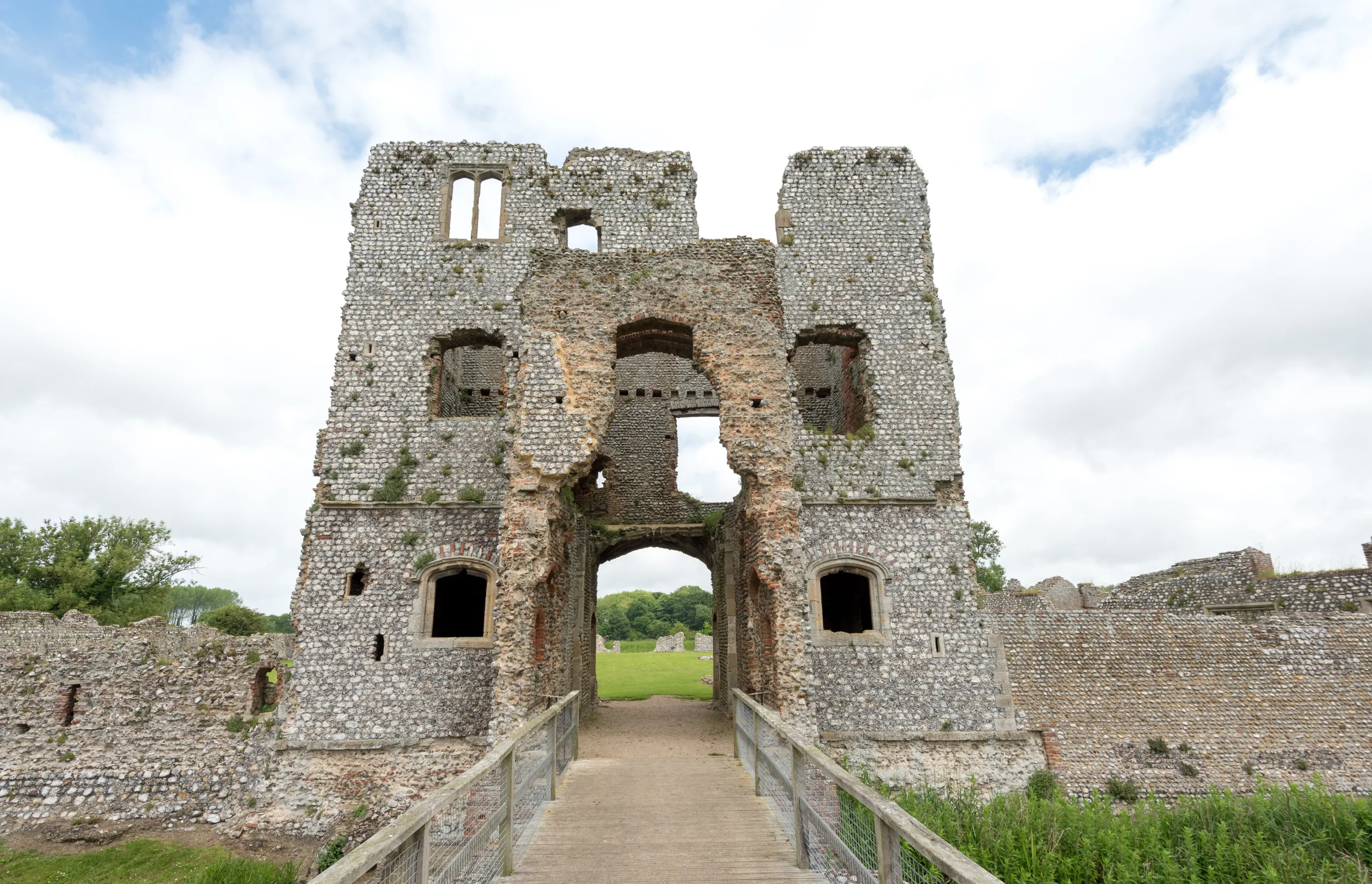
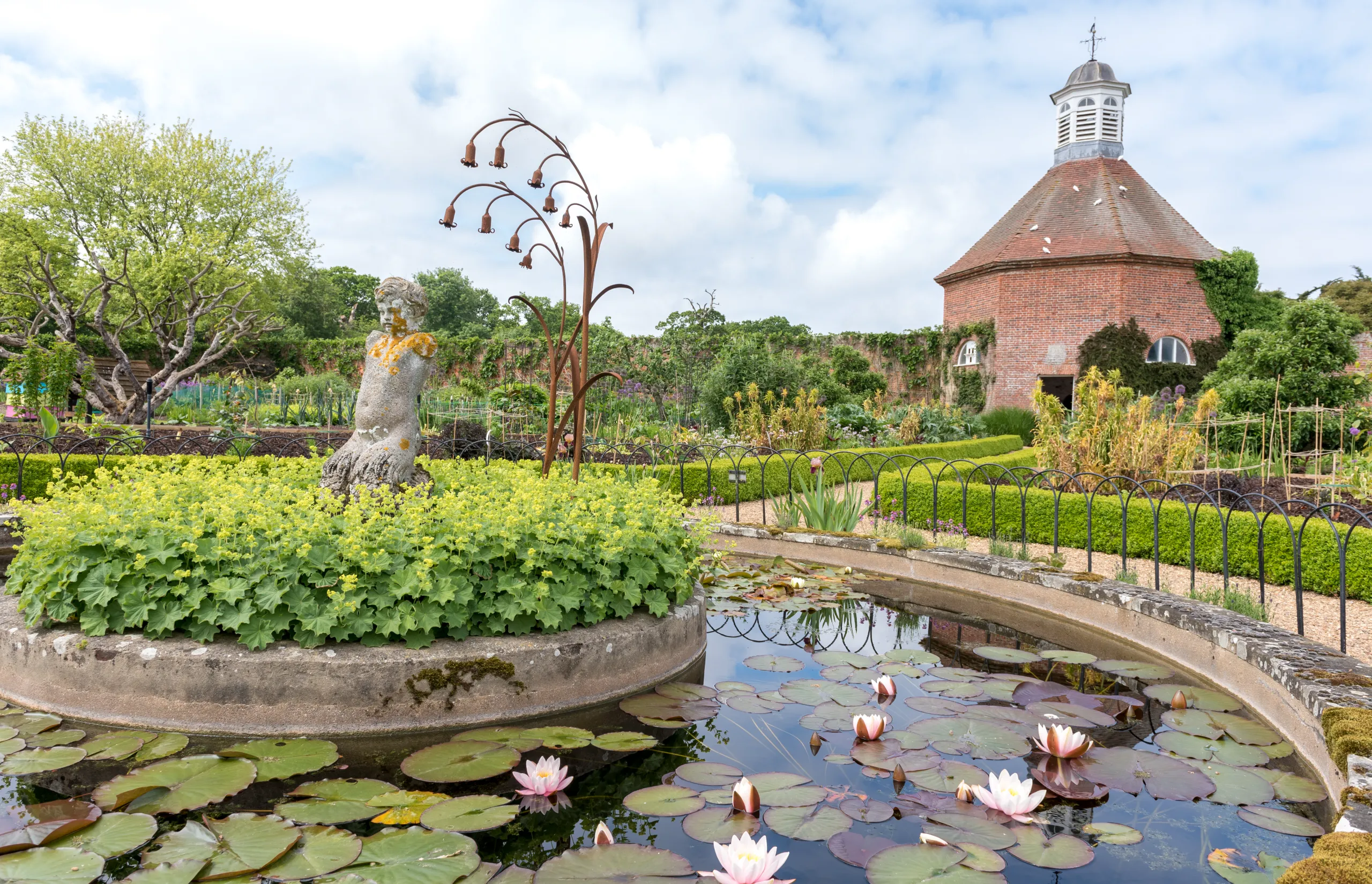
From there, we visit Sandringham Estate, the private residence of the King and Queen and where, on a tour, we nose about the royal home’s private rooms, look at all the gifts the monarchs have been given (now on display in glass cases) and find out who sits where in the nearby Church of St Mary Magdalene every Christmas morning service.
Six miles northwest is Snettisham Beach, known for the ‘Snettisham Spectacular’: on specific dates tens of thousands of wading birds are flushed inland by the incoming tide. During the Wader Spectacular they blot the sky. Through winter, thousands of noisy pink-footed geese fly take their place.
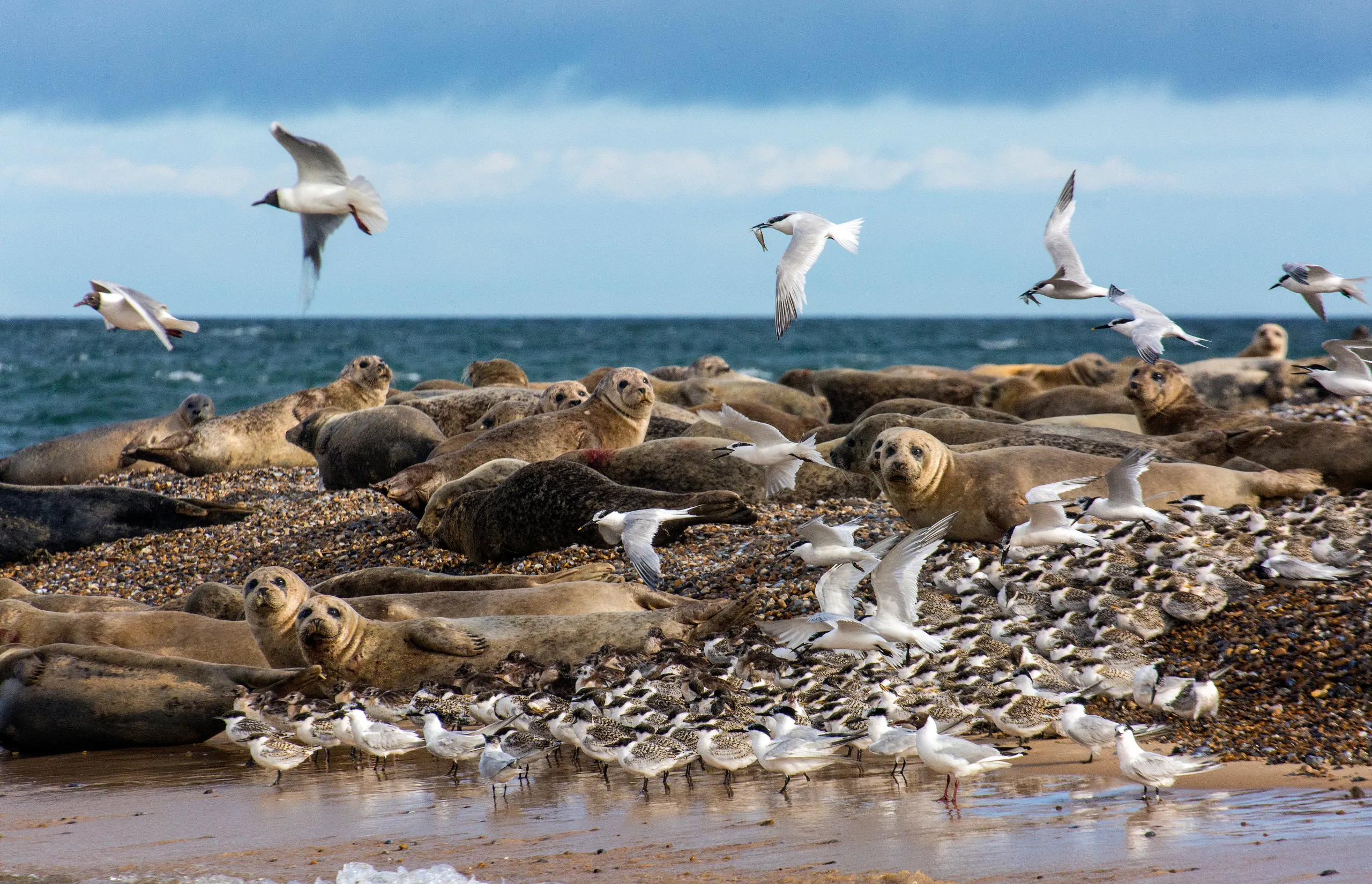
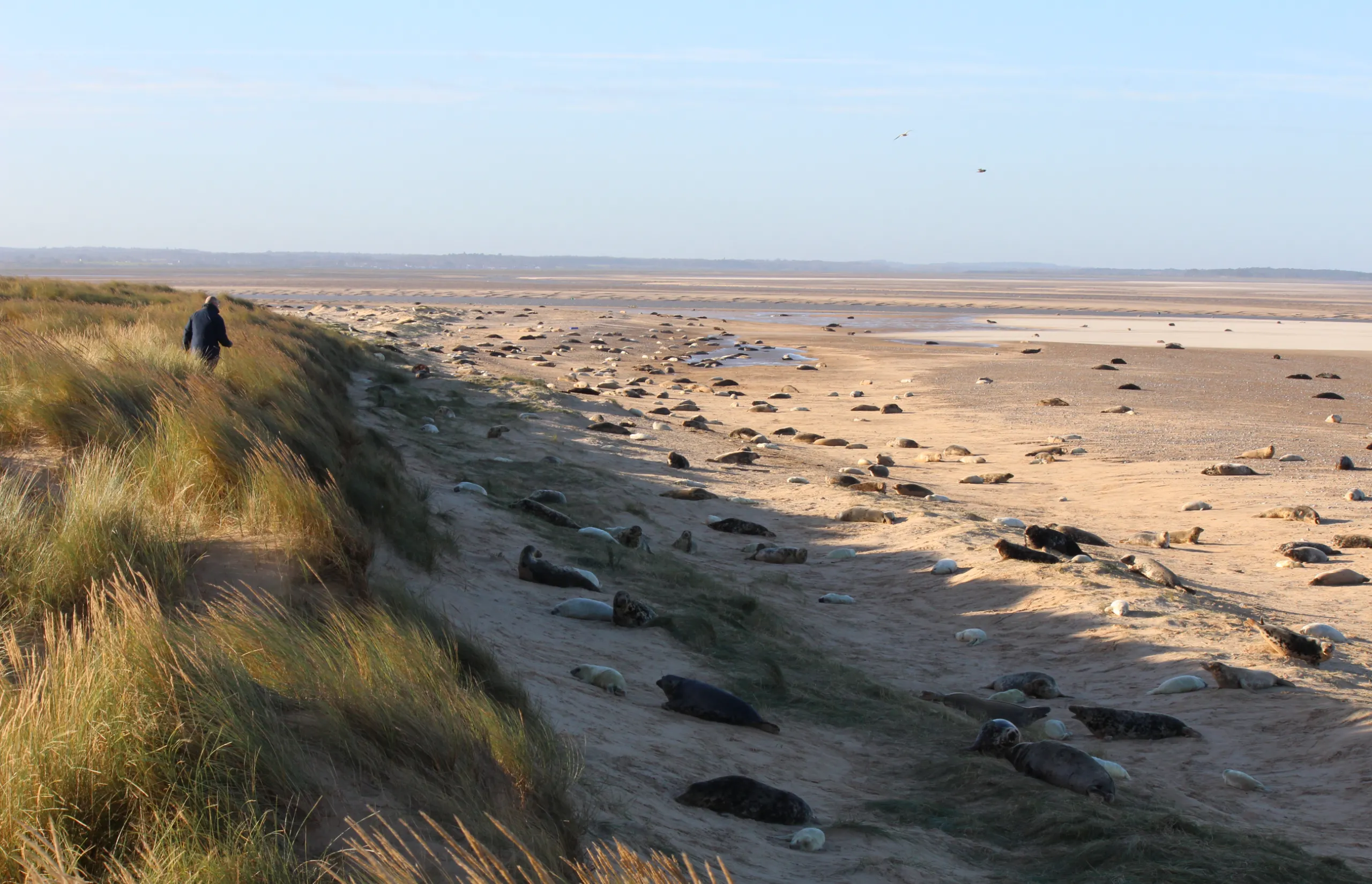
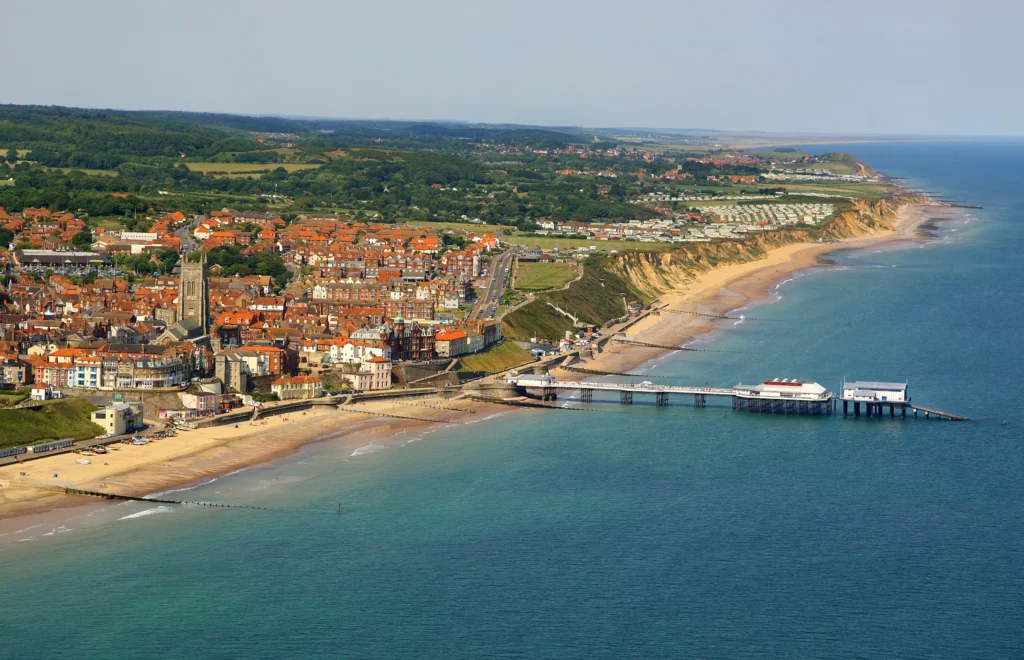
Where to stay and dine in Norfolk
We skip tea and cake at Sandringham and reach our home for the evening, Nest Farmhouse, with a big appetite. At the end of a long driveway in Docking is a reimagined cow shed that is now a new restaurant with rooms overlooking a lake at the heart of a working estate.
Norfolk head chef Grant Cotton helmed the kitchen at London restaurant St Barts, known for its nose-to-tail eating – the only restaurant in London with a Michelin star and a Green Michelin star. Nest in Norfolk is all about seasonal British dishes rooted in local ingredients – including those grown at Docking Lodge Farm. We begin our dinner in the Scandi-inspired dining room with a glass of sparkling rosé Brut from Cobble Hill Vineyard. Food miles? Just two.
A brown crab parfait with fermented chilli, cutely presented in a Kilner jar, comes with milk bread for the ample creamy spread. I follow this with pork chops in a rich, warm sauce of apricots, mustard seed, pickled savoy cabbage and burnt apple with hints of autumn to come. The doughnuts for dessert, I hear, have a following. Into a bowl of cinnamon crème fraîche I dip five pillowy, sugar-coated doughnut balls, and could easily find room for five more.
Norfolk’s coastal bounty is famous, and seven miles up the road from the Nest in the village of Brancaster Staithe is Staithe Smokehouse, continuing a tradition of smoking fish in the area for 40 years. I enjoy a Staithe-smoked kipper with two perfectly poached eggs and homemade Irish soda bread for breakfast. In the 14th century the herring haul off Britain’s east coast was so huge that Great Yarmouth, eastwards around the Norfolk coast, was the fifth wealthiest town in England.
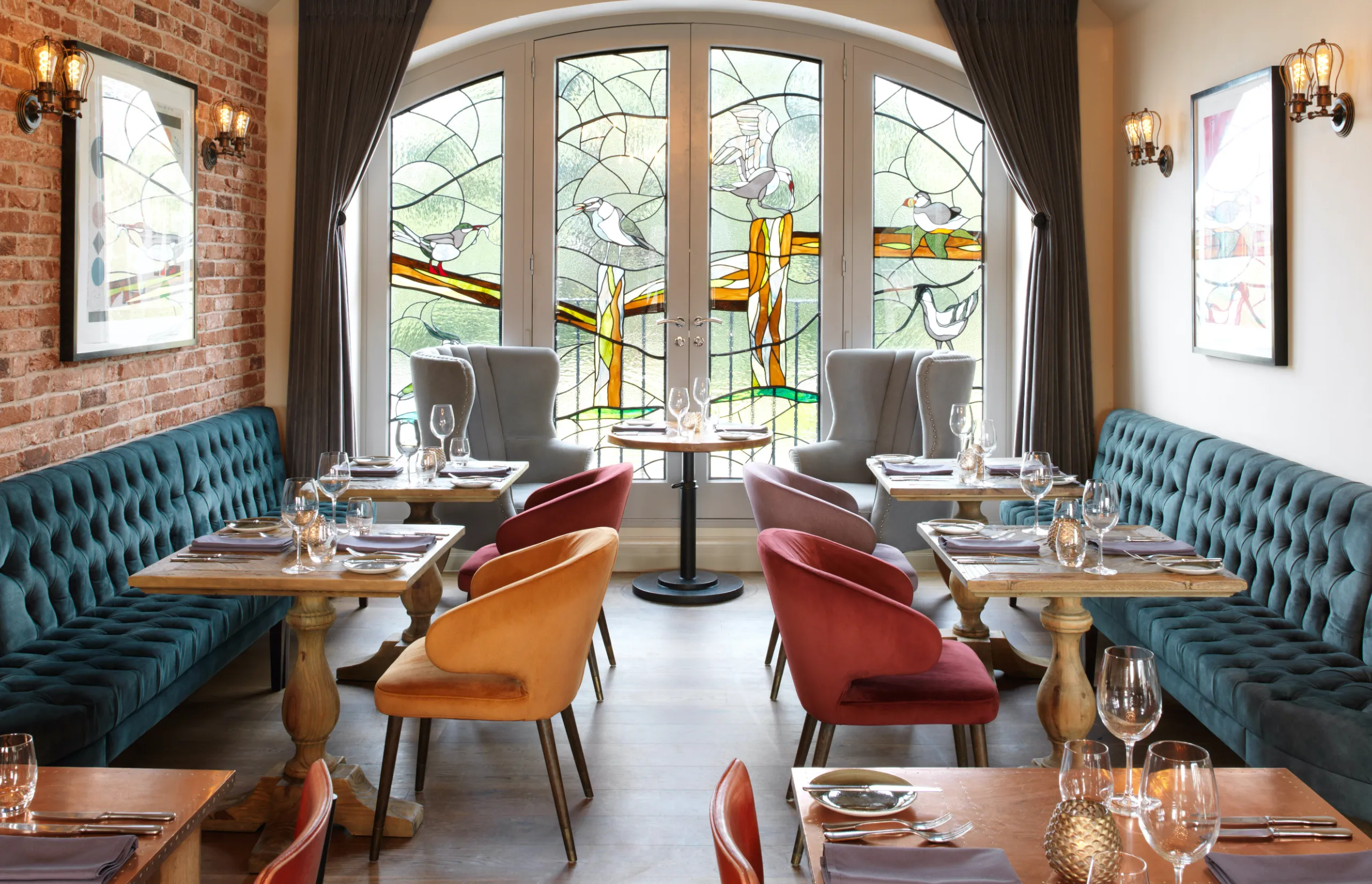

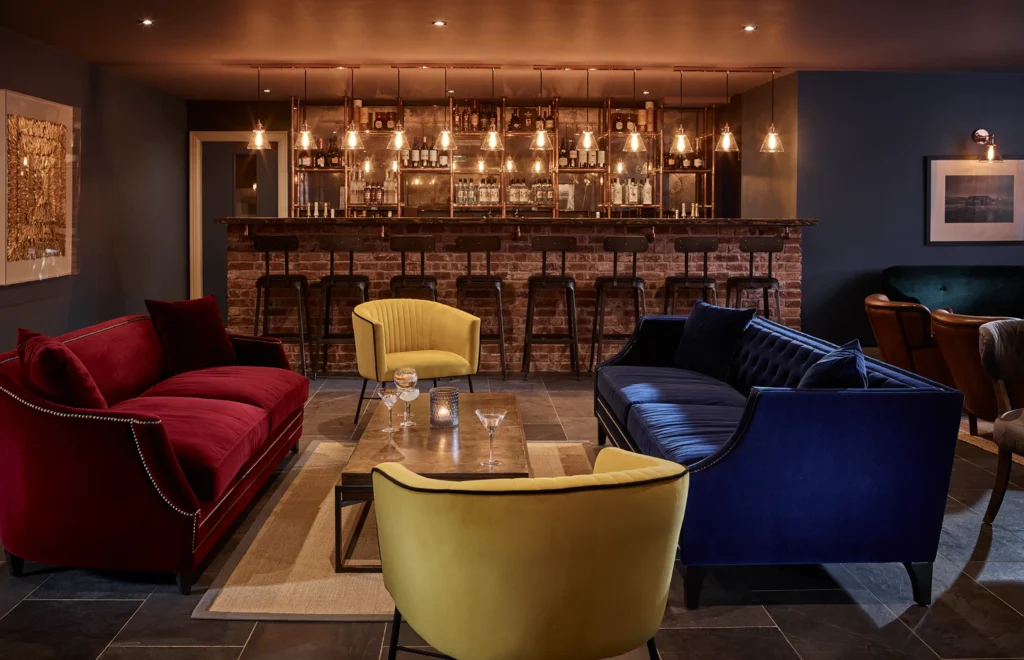
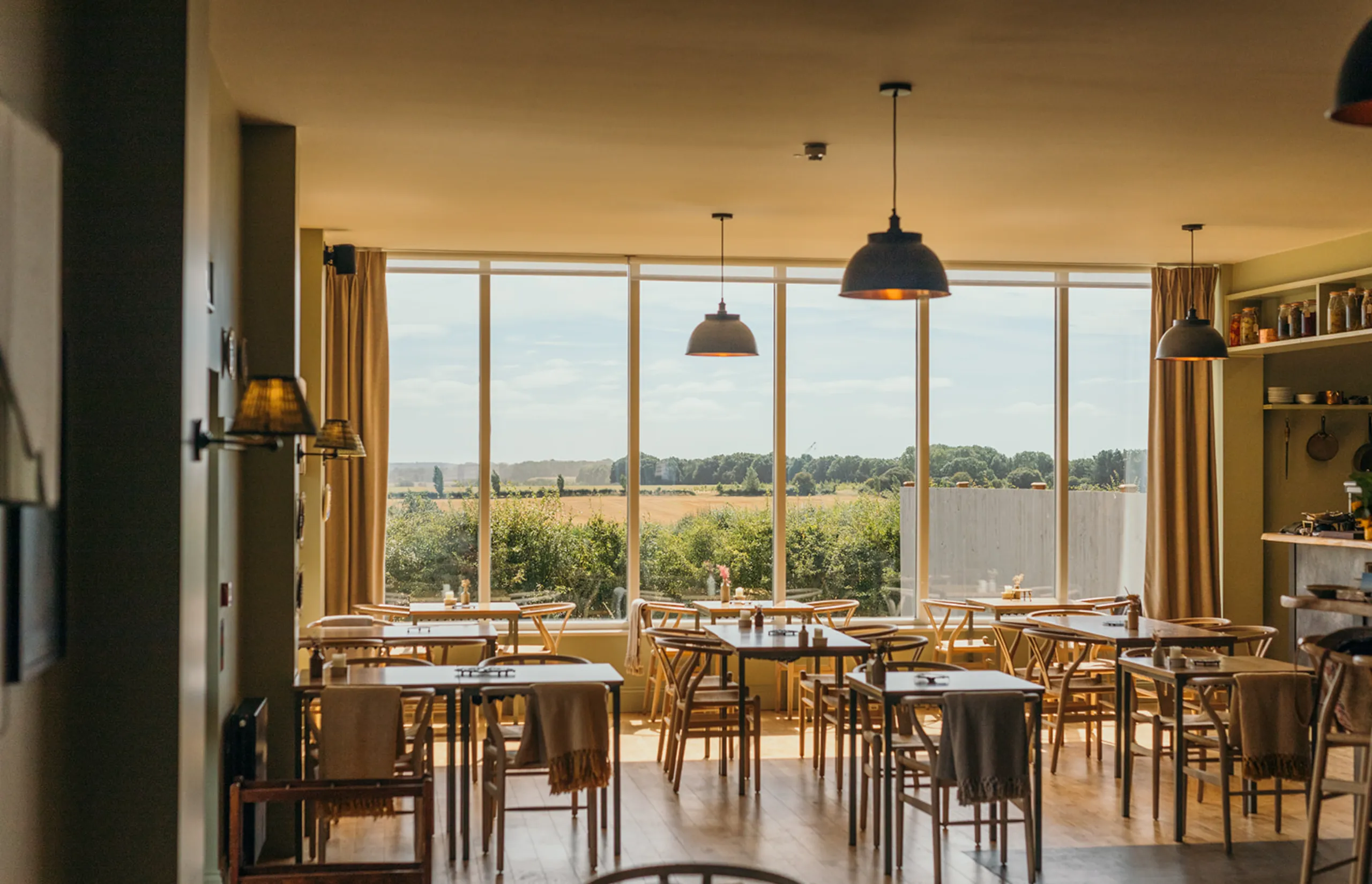
Fuelled up on breakfast kipper, we head to the coast once more. Under cotton-ball clouds and blue sky, we set off from the harbour at Burnham Overy Staithe passing bobbing boats and tinkling masts, kids paddling and paddle boarders. The path winds through the salt marsh, where pockets of still water reflect the sky, reedy grass rustles in the light breeze, and the odd boat, seemingly stuck in a creek, looks abandoned. The water wriggles around the meandering creeks and terns and oystercatchers tiptoe about the mudflats, etched with circles. As the trail reached the sea we wander into a landscape of peaked sand dunes tufted with grass that undulate and form sandy valleys with paths that might lead to the sea, but might not…
Eventually, we reach the vast expanse of Holkham Beach, backed by forest. This golden sweep appeared as a backdrop to the movie Shakespeare in Love (1998): filmgoers see the actress Gwyneth Paltrow walk barefoot along the sand. We stroll inland, towards Holkham Hall, the seat of the Coke family, the Earls of Leicester. It’s a dazzling home of lavish interiors, oil paintings, a magnificent staircase and a button for switching on a grand fountain from inside the house. The Palladian-style 18th-century pile, set in deer-dotted parkland, is discreetly hidden from the beach road.
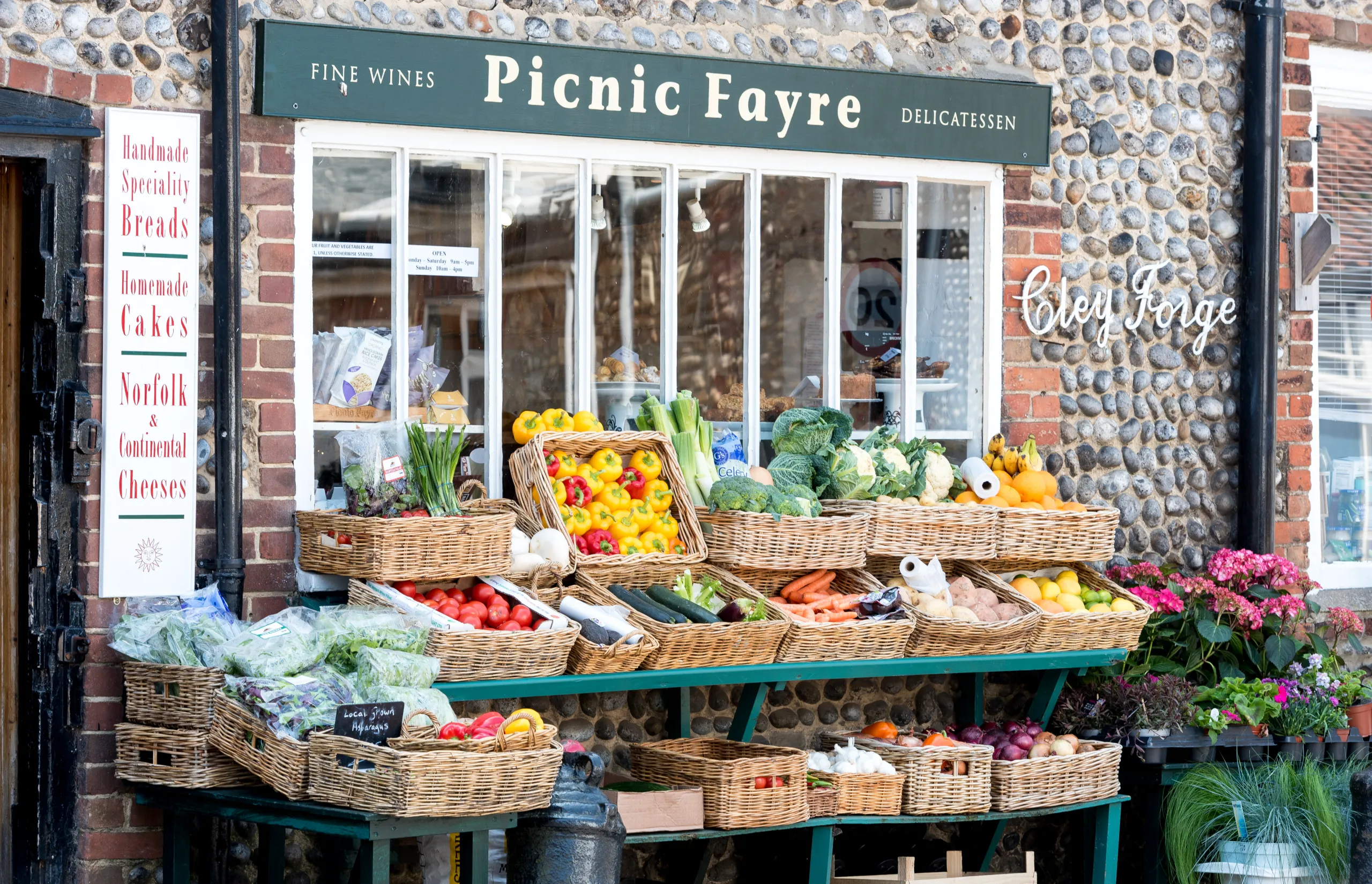
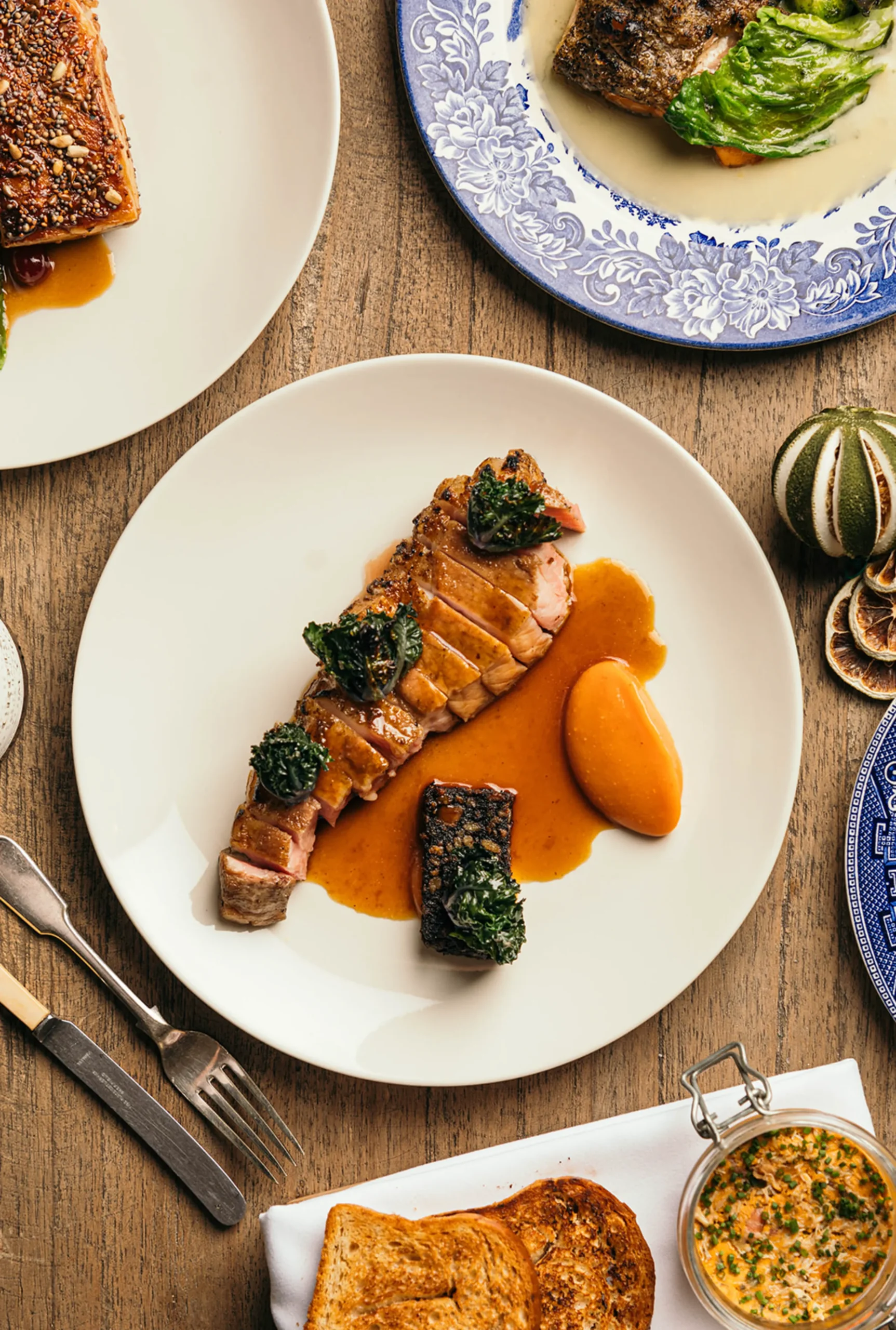

History in every direction
The bus takes us back to our car and we drive straight towards dinner. But we can’t help detouring: we grab a flapjack and coffee for last orders at the very cute Stiffkey Stores and visit the parish church with its exquisite medieval stained glass. The church grounds sit beside Stiffkey Old Hall – a grand 16th-century house built by Sir Nicholas Bacon, Lord Keeper of the Great Seal during the reign of Queen Elizabeth I.
The Harper Hotel’s stained glass of local birds has a more modern glow. It’s a nod to the fact that part of the hotel was a former glass factory. And within its brick and flint walls – the common architectural vernacular on the Norfolk coast – is a cosy spot of velvet sofas in jewel tones, a billiards table and popular bar. Our four-poster bed overlooks the lovely interior patio. Dinner is a taste adventure, too. A horseradish espuma makes a refreshing accompaniment to Staithe-smoked salmon, while my main is shards of chicory-topped tender turbot and a moreish smoked eel. And my clever dessert features a Yuzu citrus fruit made from white chocolate, coloured yellow, and filled with Yuzu mousse topped by a lemon tuile.
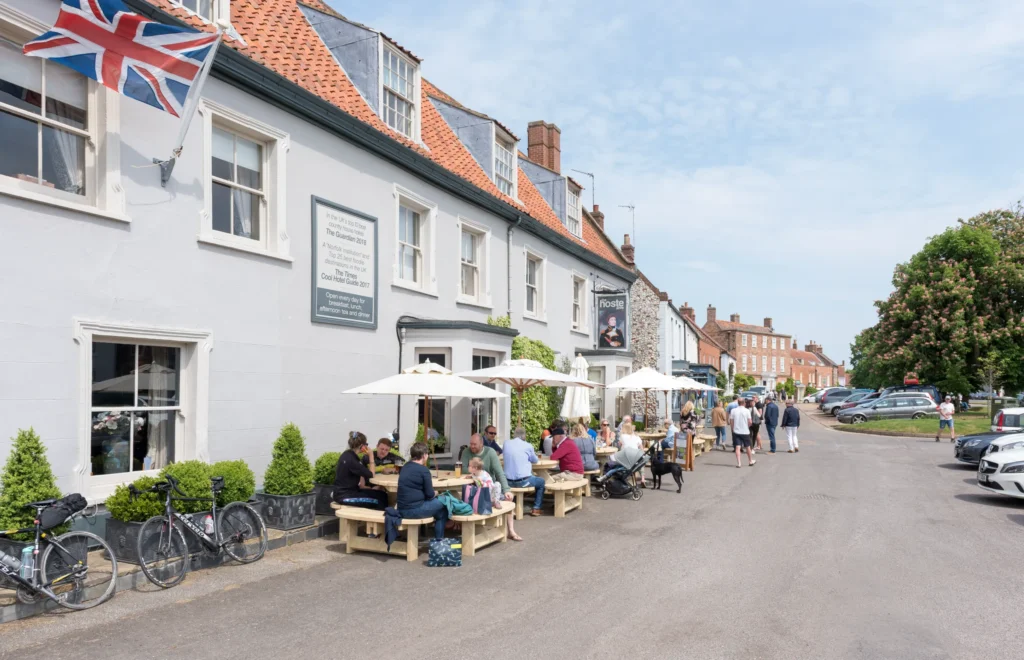
The following morning, we potter about nearby gorgeous Blakeney with its flint-and-brick homes with cute names – The Old Sweet Ship, Pear Tree Cottage, Oystercatcher – and sprays of sweet-smelling purple lilac. Just east is Cley next to the sea with its famous 18th-century windmill, once the family home of singer James Blunt and now a boutique hotel. It’s an oil painting of a setting as it overlooks the reedy marsh and scrapes (shallow ponds). Birders flock to the hides and glass-fronted visitor centre of nearby Cley Marshes for sightings of hovering Marsh harrier, European spoonbill and Britain’s loudest bird, the elusive booming male bittern.
Steam trains, clifftops and coastal walks
Binoculars come in useful, too, for the prettiest views of Weybourne village, to the east, fringed with pink hollyhocks and rose campion in summer. From our seats in the handsome carriage on a steam train of the heritage North Norfolk Railway we can see the village across rippling pale-yellow fields of corn. The train chuffs over five miles of track between the restored, glossy Victorian railway station at Weybourne to seaside Sheringham and down to the Georgian market town Holt. The stations are a film set with old transport barrows, guards wearing vintage uniforms and piles of leather suitcases. We feel like we’ve walked into Victorian England.
Weybourne railway station is a 20-minutes walk from The Maltings with its new 28 rooms housed in a collection of buildings. It was once the home of photographer William Johnson Jennis Bolding whose early, acclaimed portrait photography is on show at the extraordinary Muckleburgh Military Collection, just down the road.
The centrepiece is the Grain Store, once Bolding’s photography studio, now converted into a fabulous restaurant space. Here, I dine on Norfolk crab agnolotti decorated with sea purslane, a filling Maltings fish pie with lashings of potato, and a towering rhubarb and ginger millefeuille topped with ginger ice cream.
We walk off our meal by strolling down to the ‘Deep History Coast’ at Weybourne beach, known for its cliffs in biscuit hues that are millions of years old and whose soil and rock are compacted with the fossilised remains of mammoth, rhino and whales.
The next day will bring a walk along the high cliffs to Sheringham accompanied by the sound of skylarks in meadows coloured in yellow daisy and white clover – the best way to walk off our overindulgence in Norfolk’s warm hospitality and local fare.
Latest Articles
Don't miss the latest from Luxury Travel
